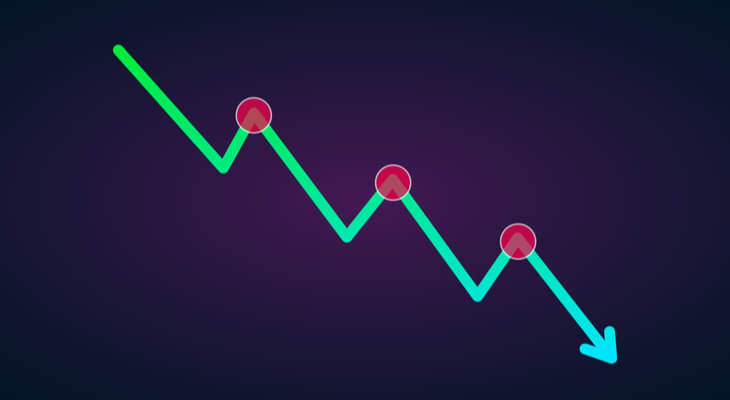Unprecedented low fulfillment rates from Carlisle’s service parts manufacturers to their dealers and distributors
This challenge has become so concerning that Carlisle’s CEO, Paul Gurizzian, says that it keeps him awake at night. In order to shed light on the scope and magnitude of the issue, we had Harry Hollenberg, Managing Director at Carlisle, sit down with Paul Gurizzian to discuss this in more detail. We have captured their conversation in a two-part series detailing: what the scope of the problem is, why it is happening, how it matters, and what to do about it. In part one of this two-part discussion, Paul and Harry delve into the WHAT, the WHY, and the HOW.
Q: What is the scope of the problem?

“In the last quarter, much of the industry’s fulfillment metrics are down 5 to 10 points”
For nearly 30 years, Carlisle has been collecting fulfillment metrics across 30 major motor vehicle original equipment manufacturers (OEMs). During the course of the pandemic, Carlisle has witnessed the lowest industry average performance for fulfillment in decades. This low performance can be tracked across all the key fulfillment metrics – system fill, facing fill, and backorders.
System Fill | The fraction of facing demand that is met by any source in the network
For the past decade, most of Carlisle’s clients had system fill of between 97% to 98% – this was fairly consistent across the automotive, heavy truck, construction, and agricultural sectors. In the last quarter, much of the industry was down around 85% to 95%, representing a decline of 5 to 10 points for many companies.
Facing Fill | The fraction of demand from facing customers that is filled by the facing depot
Facing fill really represents the demand that is filled from the distribution center that directly faces the dealer. Usually, across Carlisle’s clients, facing fill has been between 90% and 95%, but in the second quarter of 2021, many companies are below 90% and some are even below 80%. What does that mean? When demand is not filled by the facing depot or distribution center, it is typically referred or redirected to another facility or worse – the product is backordered.
Backorders | Product that is temporarily out of stock due to fulfillment constraints
Drops in facing fill imply more referral orders that take longer to get to dealers. When there is a drop in both facing fill and system fill, backorder volumes go up. Carlisle has seen unprecedented backorder counts across the industry, and at the same time, Carlisle has seen unprecedented backorder lengths, or the duration the product is backordered. That means that dealers and customers are waiting longer and longer to get the critical spare part they need to be operational.
Newer Fulfillment Metrics | Updated KPIs that measure the customer’s experience
These three fulfillment metrics have been the north stars across the industry, at least for the last 30 years. These three KPIs are measures of how the OEM or manufacturer provides the right part in the right quantity to the dealer. However, in the past several years, Carlisle has been pushing its clients to measure dealer off-the-shelf fill or even better dealer repair order fill. These metrics are better because they measure the actual end-customer experience not just the dealer experience. Yet, these metrics are typically harder to track, as it involves robust transparency and visibility into the distributors’ network and operations. Nonetheless, from what Carlisle gathers from clients, these metrics are also down.
Q: Why is this problem happening?

“There is no single reason. Globally, there are bottlenecks in supply chains for many industries”
The reality is that this isn’t just something that people are reading about. It is something that we are all experiencing in every part of our everyday lives. Even Paul and his wife felt these effects during their recent move into a new home – they experienced backorders on everything from toilets to appliances to hardware. The cause is not singular – from the supply side, some of these issues are pandemic related, and some are weather related. On the demand side, some of it is industry volumes rebounding from 2020 much faster than anticipated.
Shortages | From raw materials to containers and labor
To put a finer point on this, many suppliers are having trouble sourcing raw materials or even finding labor. There are also shortages of sea containers and bottlenecks at ports. Long Beach is a great example – just google a satellite view of Long Beach, and everyone can truly visualize the scope of the problem. There are also shortages of truck drivers. By one estimate, the trucking industry is short between 60,000 and 100,000 long-haul drivers. Additionally, there are shortages of labor at third party packagers and in distribution centers. And, if that weren’t enough, there is even a severe shortage of cardboard and other supplies required to package parts. Amazon and other e-tailers are consuming packaging material at far higher rates than in previous years to meet pandemic fueled customer demand.
Summary
These factors have combined to create the global supply chain shortages that we have all been hearing about in the news. And while these shortages may have been in large part spurred by the pandemic, the problem is likely to have lasting impacts on customers and how the world will do business well into the future.
Q: How does the problem affect each involved party?

“It’s an inconvenience for the end-customer or worse, lost revenue for the business owner. It impacts the perception of dealers on their fill, and in turn, impacts the manufacturer’s service retention”
Now is the time to delve into what this all means to our businesses – how do the unprecedented fill rates and high volume of backorders impact the value chain? To explore this, let’s look at each involved party.
End-Customers | The ones expecting the product to use their equipment
The end-customer can represent a multitude of people or entities in the industry – a consumer, a fleet, construction company, farmer, installer, body shop, municipal entity, and so on. Lost fill means that the vehicle or equipment is unavailable for use, otherwise known as downtime. In some cases, downtime represents merely an inconvenience for the owner. In others, it represents lost production for the owner. For example, a farmer cannot harvest their crop because their combine is not in operating condition. Not only is the equipment down, but often the service advisor cannot provide a promise or estimate on when the critical part is expected to arrive. That means that (i) the owner is not making money; and (ii) the owner has zero understanding of the scope of the problem or when the problem will be resolved. This uncertainty further dissatisfies the customer and creates a rift between the customer and service provider.
Dealers or Distributors | The ones expecting the product to repair the equipment
The dealer, distributor, or service provider’s problems can be summarized into two categories – (i) lost parts / service sales; and (ii) dissatisfied customers. Waiting for parts not only causes the dealer to lose highly profitable fixed operations sales, but it also has second order impacts like higher costs for loaner vehicles or goodwill spend. Additionally, technicians or mechanics are less efficient when waiting for parts, so they too make less money. Service bays also become congested with cars waiting for parts, so ultimately capacity is lost. What this all means is that when a dealer is waiting for a part, it costs them significantly.
Additionally, over the years, Carlisle has tracked customer sentiment, and when customers are asked about what they want from a service experience, one of the highest and most important drivers of satisfaction is that the vehicle (or equipment) is ready when promised. So, in today’s market, customers are unhappy waiting days, sometimes weeks, as opposed to the typical same day or next day repairs. When this happens, the customer leaves the dealer – sometimes permanently.
OEM or manufacturers | The ones distributing the product
For the manufacturer, there are several implications. First off, and perhaps the most obvious, is lost parts sales, which are highly profitable. The concern is that when dealers have customers that are unhappy, they are compelled to buy parts from the aftermarket, and then the dealer is trained to continue to buy from the aftermarket or players like WORLDPAC or Amazon or NAPA. The true concern is that when they get trained, they get sticky. Therefore, these lost part sales may not just be an immediate issue but one that becomes a long-term problem.
Manufacturers are attempting to address these delays by expediting product or using premium transportation channels like airfreight once the product is sourced. These alternative forms of transportation result in higher supply chain costs, so the manufacturers are losing parts revenues perhaps for the long-term and are spending more.
At the same time, customers are extremely dissatisfied, particularly with the poor service experiences they are receiving at the dealer. It may not be the dealer’s fault, but it is human nature to feel that someone is to blame. At the end of the day, a bad service experience directly results in a reduced probability of the customer purchasing another vehicle / equipment from the same brand in the future.
Summary
These unprecedented fill rates, caused by pandemic pressures among other extreme events, have far reaching implications and are impacting the entire value chain – lost sales, high costs, and tarnished reputations.
In our next post…
In this post, Paul Gurizzian discussed with Harry Hollenberg the scope of the supply chain shortage, the reasons it is occurring, and why it matters. All of this together paints a bleak picture, but their conversation doesn’t end here. In the next post of this series, Paul and Harry will discuss what manufacturers and their distributors can do to address these problems and prevent a shortage of this scale from happening in the future.
Carlisle’s Executives

Paul Gurizzian
Chief Executive Officer

Harry Hollenberg
Managing Director